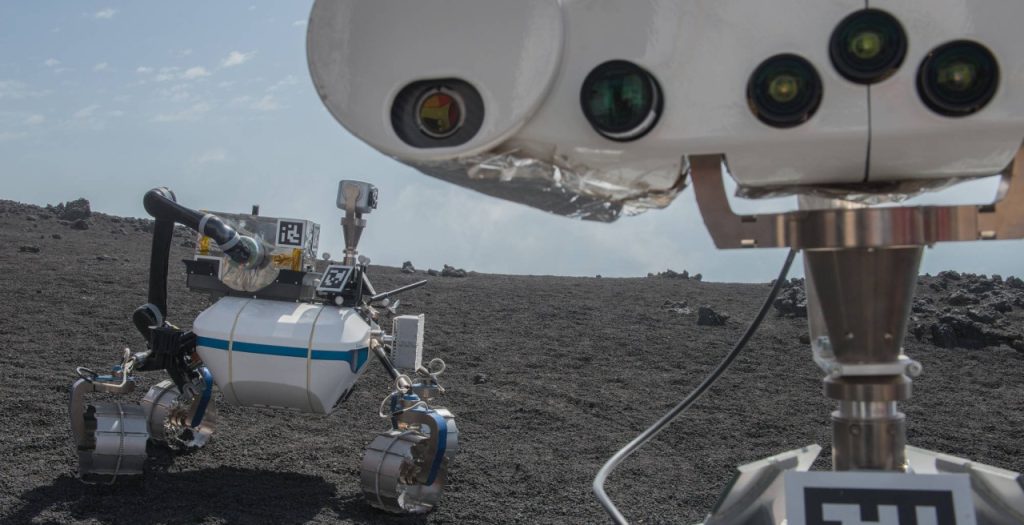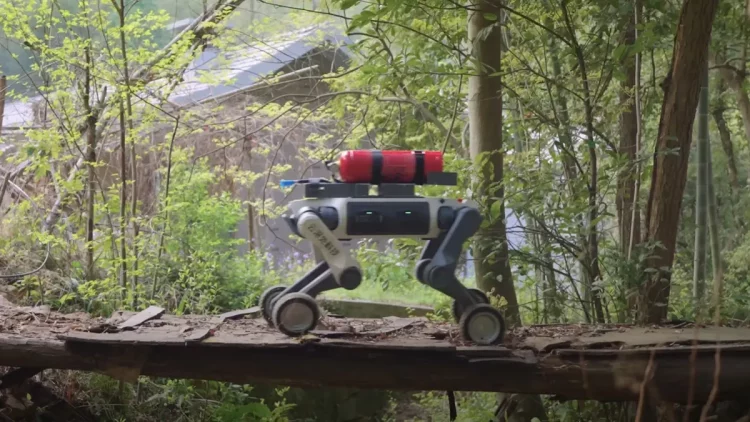Introduction: The Promise of Biomimetic Robots in Extreme Environments
The field of biomimetic robotics, which draws inspiration from nature, has experienced remarkable advancements in recent years. These robots are designed to replicate the behaviors and functionalities of biological organisms to operate efficiently in various environments. Among the most fascinating applications of biomimetic robots is their ability to thrive in extreme environments—places where traditional machines or human operators would struggle to survive.
Whether it’s the freezing cold of the Antarctic, the crushing depths of the ocean, the intense heat of volcanic landscapes, or the harsh conditions of outer space, biomimetic robots are designed to operate under some of the most extreme conditions found on Earth and beyond. This ability stems from the fact that these robots are engineered to mimic the adaptive strategies found in nature. Just as animals have evolved to live in the most hostile environments, robots can be developed to perform critical tasks in these settings.
In this article, we will explore the fascinating world of biomimetic robots, particularly how they are adept at performing tasks in extreme environments. We will examine their applications, underlying technologies, challenges, and potential for future innovation. This field not only promises to push the boundaries of robotics but also offers us insights into how we might design better, more resilient machines for both exploration and practical use in hazardous areas.
1. Biomimetic Robotics: The Core Concept
Biomimetic robots are machines designed to replicate the structures, behaviors, and functionalities found in animals and plants. These robots are equipped with adaptive mechanisms that allow them to perform specific tasks more efficiently by drawing from the survival strategies of nature. From mimicking the movement of birds to emulating the heat resistance of desert organisms, biomimetic robots aim to optimize performance in specific environments, especially the extreme ones.
1.1. Inspiration from Nature’s Adaptations
Nature’s creatures are marvels of adaptation, honed over millions of years to survive and thrive in challenging conditions. Some of the most extreme environments on Earth include the frozen tundra, the scorching desert, the deep ocean, and space, each with unique conditions that challenge both human and robotic exploration.
For example:
- Arctic animals, such as polar bears and penguins, have evolved thick fur and specialized body systems to conserve heat.
- Deep-sea creatures have developed bioluminescence and extraordinary pressure resistance to survive in the crushing depths of the ocean.
- Desert species, such as camels and certain reptiles, can endure extreme heat and dehydration.
- Insects like ants and cockroaches possess unique abilities to move through tight spaces, making them ideal candidates for environments with limited access.
By studying these animals, biomimetic robots are equipped with features that allow them to endure similar extreme conditions. For instance, robots with specialized sensors can detect temperature variations or pressure changes, while multi-jointed limbs enable them to crawl through rubble or over rocky terrain, much like insects.
2. Applications of Biomimetic Robots in Extreme Environments
Biomimetic robots, with their inherent ability to adapt to extreme conditions, are playing an increasingly critical role in a variety of mission-critical applications. These applications often involve environments that are too hazardous, remote, or challenging for human intervention, where robots can take on roles that are essential for exploration, disaster relief, and even survival in life-threatening situations.
2.1. Underwater Exploration and Monitoring
The deep ocean is one of the least explored and most challenging environments on Earth. The pressures at great depths, the cold temperatures, and the absence of light create an environment that’s difficult for human divers and traditional machines to navigate. Biomimetic robots, particularly those inspired by fish and marine mammals, are playing a crucial role in deep-sea exploration and environmental monitoring.
For instance, biomimetic underwater robots can mimic the propulsion mechanisms of fish or whales, using undulating fins or flippers to move efficiently through water. This allows them to reach depths that would otherwise be inaccessible, surveying coral reefs, tracking marine life, and even collecting critical data on ocean health. These robots are equipped with advanced sensors to measure temperature, salinity, oxygen levels, and pollution.
Some notable examples include:
- Mantas: A biomimetic robot inspired by the manta ray, capable of gliding through water, ideal for exploring the deep ocean.
- Swarmbots: Multiple autonomous underwater robots working together to monitor vast underwater areas.
These robots are essential tools for conducting research on climate change, marine biodiversity, and the health of ocean ecosystems, where human access is limited or impossible.
2.2. Space Exploration and Planetary Robotics
Space exploration presents some of the most extreme conditions known to mankind. The extreme cold of space, coupled with radiation, low gravity, and dust storms on planets like Mars, make it difficult for traditional robotic systems to perform tasks with the same level of efficiency as they would in more hospitable environments.
Biomimetic robots are showing promise in this field, particularly in how they adapt to harsh terrain and variable conditions. Inspired by insects and bipedal animals, these robots are designed to withstand radiation, navigate rocky surfaces, and move autonomously on alien landscapes.
For example, Mars rovers, such as Perseverance, have legs and wheels that simulate the adaptive locomotion of animals, allowing the rovers to move over difficult terrain. Additionally, drones and flying robots inspired by birds or insects could eventually assist in aerial exploration of planets or moons, allowing for more dynamic movement and flexibility compared to traditional wheeled rovers.
In the future, we may see robots designed to swarm in space environments, much like insects or birds, to achieve collective exploration goals or search for signs of life on distant planets.
2.3. Search and Rescue Missions in Hazardous Environments
In disaster-stricken areas, whether from natural disasters like earthquakes, floods, or industrial accidents, it is often unsafe or physically impossible for human rescuers to enter. This is where biomimetic robots excel, particularly in search and rescue missions. These robots are capable of navigating dangerous, unpredictable environments where traditional rescue methods would fail.
Inspired by the agility of animals like snakes, biomimetic robots can move through rubble, narrow spaces, and collapsed buildings, locating survivors and providing them with life-saving supplies. Robots with artificial muscles and flexible limbs can mimic the movements of animals, such as the caterpillar, allowing them to move through rubble without causing further damage to their surroundings.
In addition to ground-based robots, flying robots inspired by birds or insects can be used to conduct aerial reconnaissance in areas with limited visibility or in dense smoke. By leveraging flocking behaviors and cooperative decision-making, robot swarms could navigate complex environments and work together to locate survivors and transport resources.
2.4. Volcanic and Extreme Heat Environments
Another extreme environment where biomimetic robots can be incredibly useful is in volcanic eruptions or areas with extreme heat. Volcanic eruptions release not only intense heat but also toxic gases and lava flows, making it dangerous for humans to enter these areas. Robots inspired by heat-resistant animals, such as fire beetles, which can survive extreme temperatures, can be used to survey and monitor volcanic activity.
These robots are equipped with thermal sensors to detect temperature changes, measure gas emissions, and even map lava flows in real time. By mimicking the adaptive behaviors of heat-resistant species, these robots can endure high-temperature environments and provide critical information to scientists and emergency responders.

3. Challenges and Limitations
While biomimetic robots offer incredible potential, there are several challenges to their development and deployment, particularly in extreme environments.
3.1. Energy Efficiency and Power Supply
Extreme environments, such as deep-sea depths or space, often lack reliable energy sources, posing a significant challenge to robot endurance. Biomimetic robots must be equipped with highly efficient power systems to operate for extended periods without external recharging or refueling. Advances in battery technology, energy harvesting from the environment (such as solar or kinetic energy), and autonomous power management systems are key areas of research to address this issue.
3.2. Communication and Navigation
In extreme environments, traditional communication methods, such as radio signals, may not work effectively due to the absence of a signal or interference from the environment. Biomimetic robots need to rely on advanced communication protocols such as acoustic waves or optical systems to transmit data in places like underwater or outer space. Developing robust and reliable communication systems for these environments is essential for the success of these robots.
3.3. Reliability and Durability
Operating in extreme environments demands exceptional durability. Biomimetic robots must be able to withstand not just the physical challenges of their environment but also the wear and tear from continuous operation. To achieve this, robots must be equipped with resilient materials and self-healing technologies that allow them to endure in these environments without succumbing to damage.
4. Future Directions
As we continue to explore new frontiers in extreme environments, biomimetic robots will evolve to meet the demands of these challenging conditions. The development of swarm robotics, multi-modal robots, and AI-driven decision-making will make it possible to handle large-scale tasks in extreme environments, from planetary exploration to environmental monitoring and disaster response.
By drawing inspiration from nature, these robots will continue to push the boundaries of what’s possible, providing unprecedented capabilities to humanity in the exploration and understanding of the most hostile regions of the Earth and beyond.
Conclusion
Biomimetic robots represent a significant leap in the evolution of robotics, offering new solutions to problems that humans and traditional robots cannot solve. Their ability to adapt to extreme environments—whether on Earth or in outer space—opens up new possibilities for exploration, disaster relief, environmental monitoring, and more.
As research and development in this field continue to progress, we are likely to see increased collaboration between engineers, biologists, and materials scientists to design more efficient and capable biomimetic robots. With each advancement, these robots bring us closer to a future where they can operate seamlessly and autonomously in some of the most inhospitable environments, greatly enhancing our capabilities in these critical areas.











































